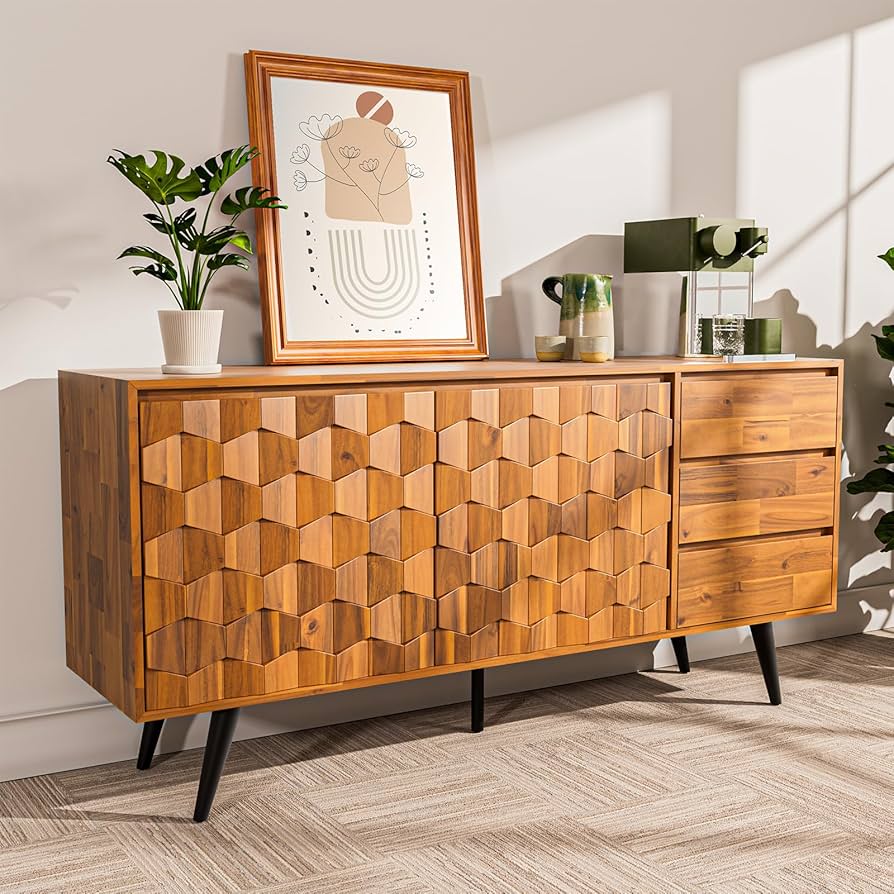The sideboard, a versatile piece of furniture that combines storage and style, has been a staple in homes for centuries. From traditional wood sideboards to contemporary metal designs, these functional and decorative pieces offer a variety of options to suit different tastes and needs.
A Brief History of the Sideboard
The sideboard’s origins can be traced back to the 16th century, when it was initially designed as a buffet table for serving food and drinks. Over time, the sideboard evolved to include storage compartments for tableware, linens, and other household items. In the 18th and 19th centuries, sideboards became popular in grand homes and were often ornately decorated with carvings, inlays, and gilded accents.
The Versatility of the Sideboard
Today, sideboards continue to be a popular choice for homeowners seeking both storage and style. Their versatility allows them to be used in a variety of settings, including:
- Dining Room: The traditional use of a sideboard is to store and serve dishes, glassware, and linens.
- Living Room: A sideboard can be used as a console table for displaying decorative items or as a storage unit for remote controls, books, and games.
- Entryway: A sideboard can serve as a convenient place to drop keys, mail, and other items upon entering the home.
- Bedroom: A smaller sideboard can be used as a nightstand or a dressing table.
Types of Sideboards
Sideboards come in a wide range of styles, materials, and sizes to suit different tastes and needs. Some of the most popular types include:
- Traditional: Made from wood, often with ornate carvings and decorative details.
- Modern: Featuring clean lines, minimalist designs, and often made from materials such as metal or glass.
- Vintage: Retro-inspired sideboards with a mid-century modern or vintage aesthetic.
- Rustic: Made from natural materials like wood or stone, with a rough-hewn finish.
- Custom: Tailored to specific needs and preferences, with unique designs and features.
Choosing the Right Sideboard
When selecting a sideboard, consider the following factors:
- Size: Ensure the sideboard fits comfortably in your desired space.
- Style: Choose a sideboard that complements the overall aesthetic of your home.
- Storage Needs: Consider the amount and type of storage you require.
- Materials: Evaluate the durability and maintenance requirements of different materials.
- Budget: Set a budget for your sideboard purchase.
Incorporating a Sideboard into Your Home
A sideboard can be a focal point in any room, and there are many ways to incorporate it into your home decor. Some ideas include:
- Displaying Decorative Items: Use the top of the sideboard to display vases, candles, or framed photos.
- Creating a Bar Area: Equip your sideboard with a mini-fridge, glassware, and liquor to create a stylish home bar.
- Adding Seating: Place a pair of chairs or stools in front of the sideboard to create a cozy seating area.
- Mixing and Matching Styles: Combine a traditional sideboard with modern decor for a unique and eclectic look.
The sideboard, with its versatility and timeless appeal, is a valuable addition to any home. Whether you’re looking for storage, style, or both, there’s a sideboard out there to suit your needs.

